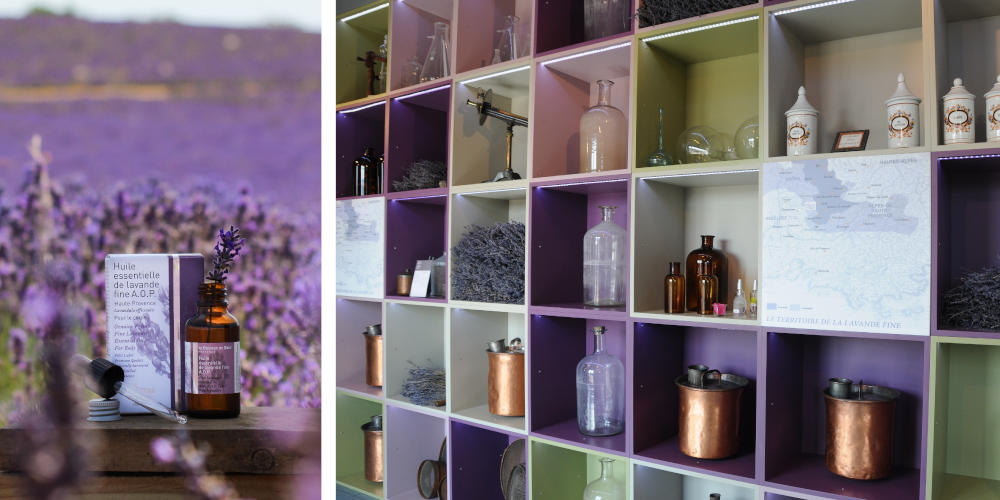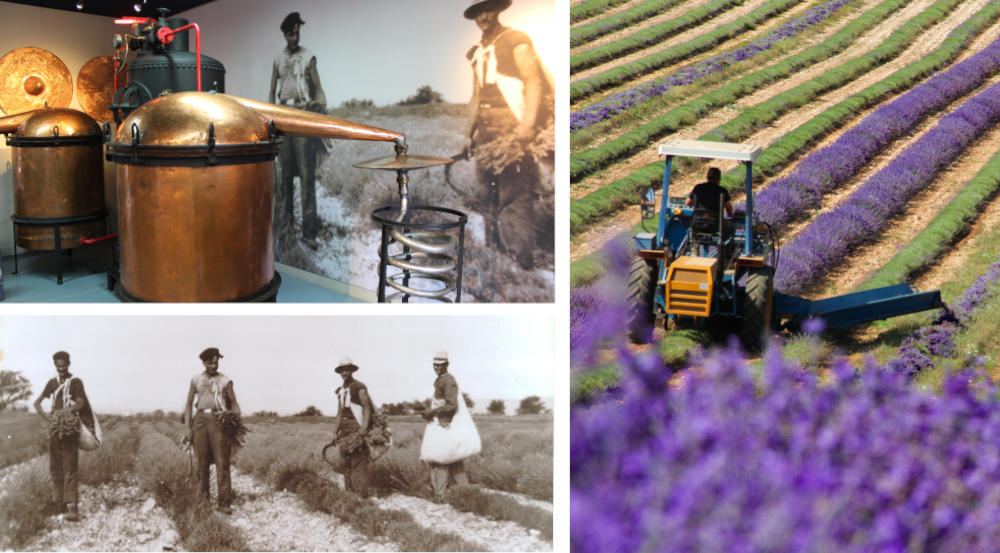Musée de la Lavande: Living the lavender life
Text: Lisa Gerard-Sharp | Photos © Musée De La Lavande

The Lavender Museum celebrates `true lavender’ from the high mountains in Provence, and is the only lavender recognised for its medicinal benefits.
Lavender in bloom is a beguiling sight, a vision of mauve waves that conjures up Provence. On these lofty Lubéron slopes one family has cultivated `true lavender’ for five generations. It is a story of saving an ancient way of life by growing and distilling `blue gold’ while winning over visitors to their vision of sustainability. Welcome to the Lavender Museum.
The Musée de la Lavande is a family love affair with a fragile flower that symbolises Provence. The Lincelé family has cultivated lavender in these uplands since 1890 and is on a mission to continue painting Provence purple-blue. Behind this romantic notion is a belief in roots and a battle for the soul of this rugged region. Growers and distillers Jack and Sophie Lincelé are dedicated to producing only the purest lavender, from flowers as diverse as the family members themselves. Not for them the cheap, cloned varieties that lack subtle scents and soothing properties. As Sophie Lincelé says: “Lavender is easily recognised but easily misunderstood.”
Museum mooch
Tucked into a traditional farmhouse south of Gordes is an engaging exploration of lavender lore. It runs from flowery romance to the debunking of myths. “Our museum was created to tell the story of true lavender, not lab-lavender,” declares Sophie Lincelé. “We want visitors to make informed choices and, in so doing, help preserve our precious Provencal heritage forever.”
It wasn’t until the 19th century that the peasants of Haute-Provence realised lavender’s potential as `blue gold’, worth cultivating for its essence. Even so, outside the lofty world of perfume, lavender distillation was family-run until the Second World War. After that, professionalism took over but industrialisation led to the creation of strong-smelling detergents masquerading as `lavender.’ Since then, the side-lined craft industry has fought back, spearheaded by grower-producers of `true lavender’, like the Lincelé.
Their lavender might be natural, but the landscape is designed. “It’s easy to forget that this timeless lavender landscape is crafted by growers like ourselves,” Lincelé reminds us. Jostling for space in the museum is an array of ancient perfume flasks and burnished copper stills collected by family forebears. “There’s one dating back to 1626, the same year our lavender farm was built, so a lovely coincidence,” smiles Lincelé. The dynastic legacy is ever-present: her teenage children are happy to test the newly-revamped museum route as well as the lavender macaroons.

Left: Prized AOP Essential Lavender Oil.| Right: Potions and perfume flasks in the Lavender Museum.
True-blue believers
The museum will also open your eyes to real-deal lavender. Known as ‘lavandula officinalis’, it grows above 900 metres in the parched Provencal uplands. According to Jack Lincelé: “In the same way as you would create a great wine, lavender is all about climate and soil.” His wife adds: “True lavender is a native plant propagated by seeding, while cheap, cloned lavender relies on cuttings.” Instead, ‘lavandin’, hybrid lavender, grows on lower levels and often produces the overpowering pong found in detergents. Only true lavender has medicinal properties and a scent subtle enough for prestigious perfume houses, or for the family’s niche products: “We don’t simply make a sweetly-scented hand cream but one that soothes.” And they master the whole process themselves, from plant to potion.
It stands to reason that the museum supports the true believers, even if there is a cost attached. Jack Lincelé is clear: “We need to distil 130 kilos of flowers to produce one kilo of essential oil, a yield of only one per cent.” As proof of its status, this is the only plant in Provence to gain a designated classification for its essential oil, Lavande de Haute Provence (AOP). As for `the science bit’, the distiller waxes lyrical about his oil’s healing properties: “It’s anti-allergenic, anti-inflammatory and regenerative.” In short, “lavender is such a multifunctioning, magical plant it’s called the Swiss army knife of aromatherapy.”
Dreaming in lavender
As the master-distiller, Jack Lincelé is mainly found on the family’s Chateau du Bois farm on the high plains nearby, often helped by his son Max. It is a 330-hectare estate with 110 hectares of lavender, including 40 set aside for crop rotation. In July, it is made for dreaming in mauve: “By looking at a flower, I know when it needs harvesting, just as my grandfather knew the perfect moment. We harvest blooms under the blazing sun, at the hottest time of day, when the plant is at its peak.”
His wife is similarly entranced by her home: “It awakens my senses, beginning with the view of the undulating uplands, of the flowering fields framed by mountains. If it’s baking hot, the lavender releases its heady scent and, when you caress the flower’s bloom, the essences and aromas just explode. True lavender is so rare and so worth preserving that we want to make visitors aware of the fragility of this precious heritage.”

Left (Top): Copper stills for extracting essential oil – in the Lavender Museum. | Left (Bottom): Lavender-picking in Provence in the olden days. | Right: At work on the Chateau du Bois lavender estate.
Musée de la Lavande: museedelalavande.com Le Chateau du Bois Provence: lechateaudubois.com
Subscribe to Our Newsletter
Receive our monthly newsletter by email





